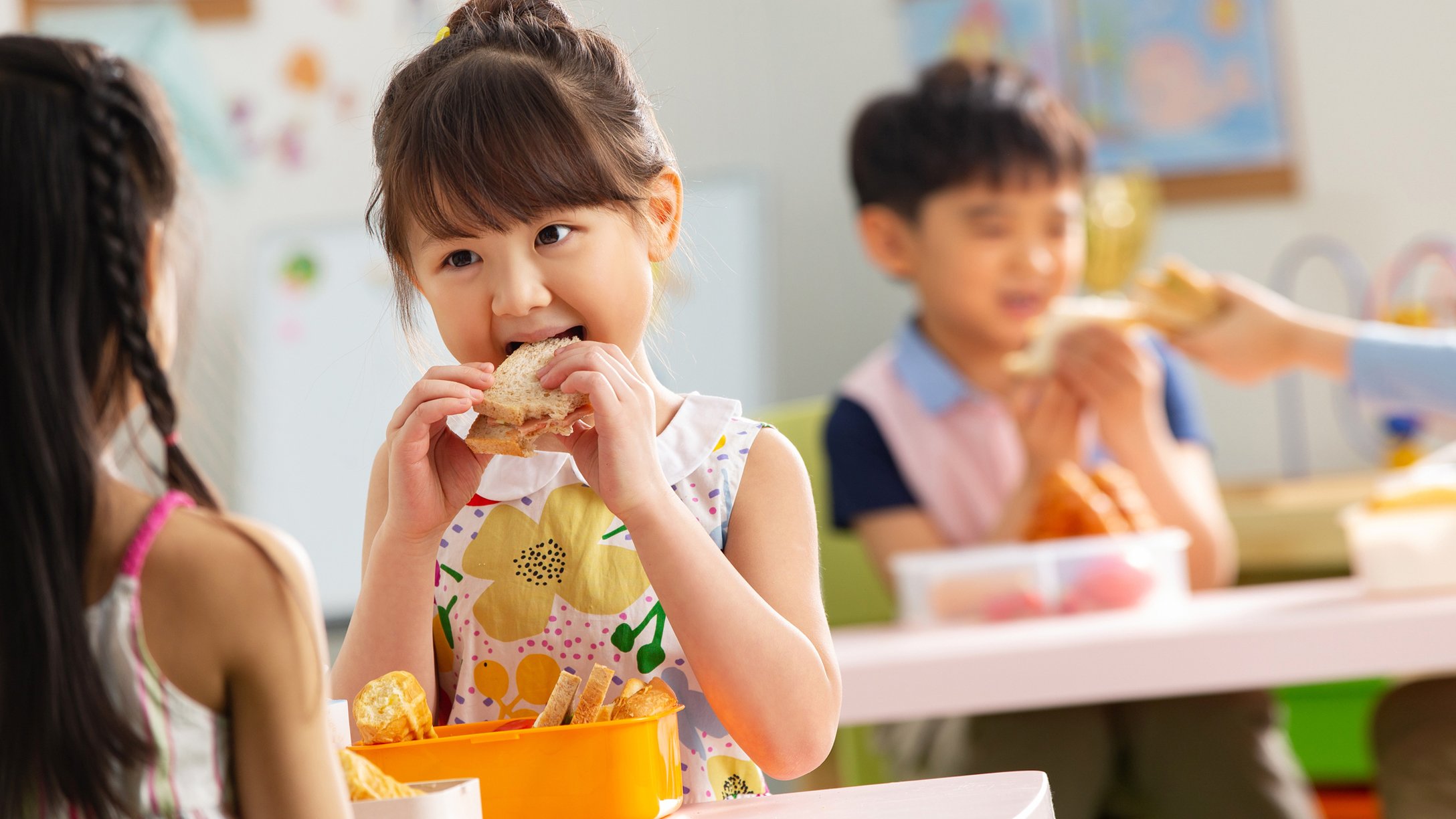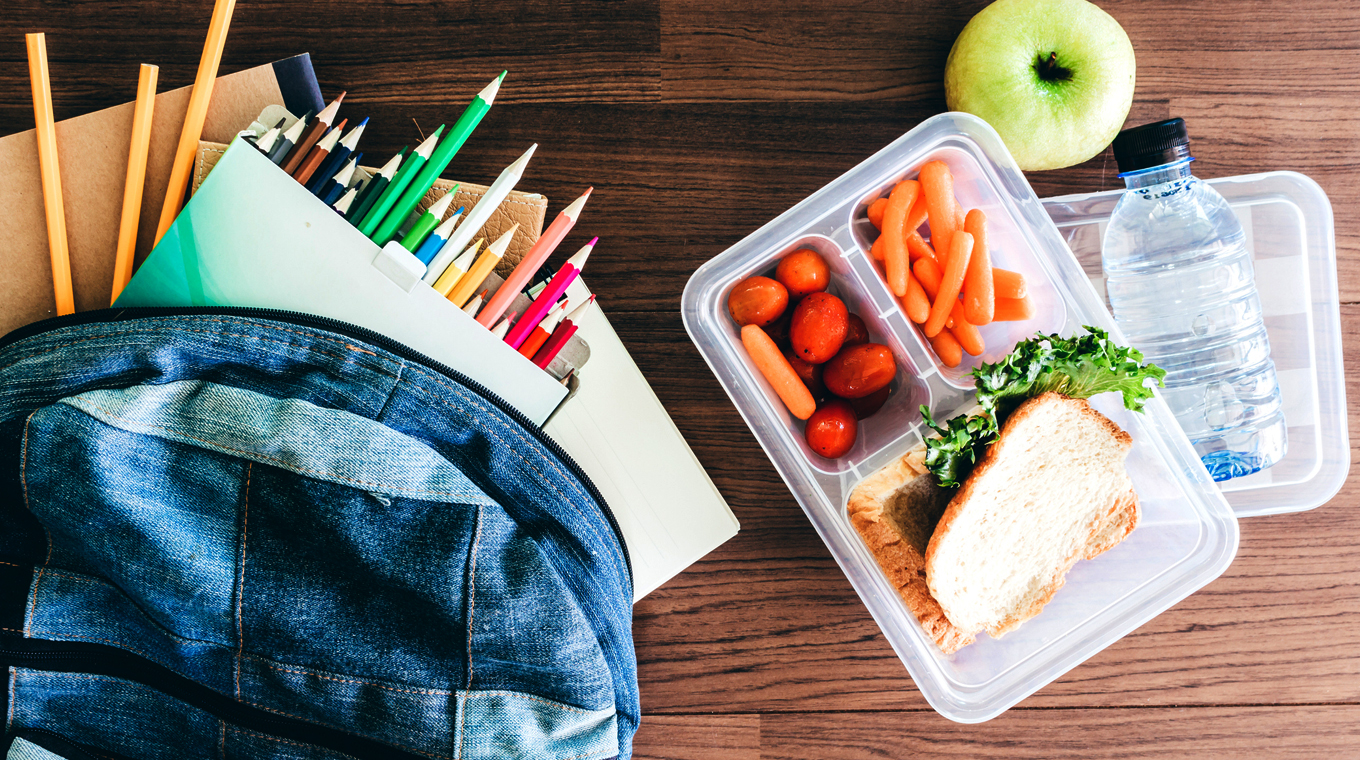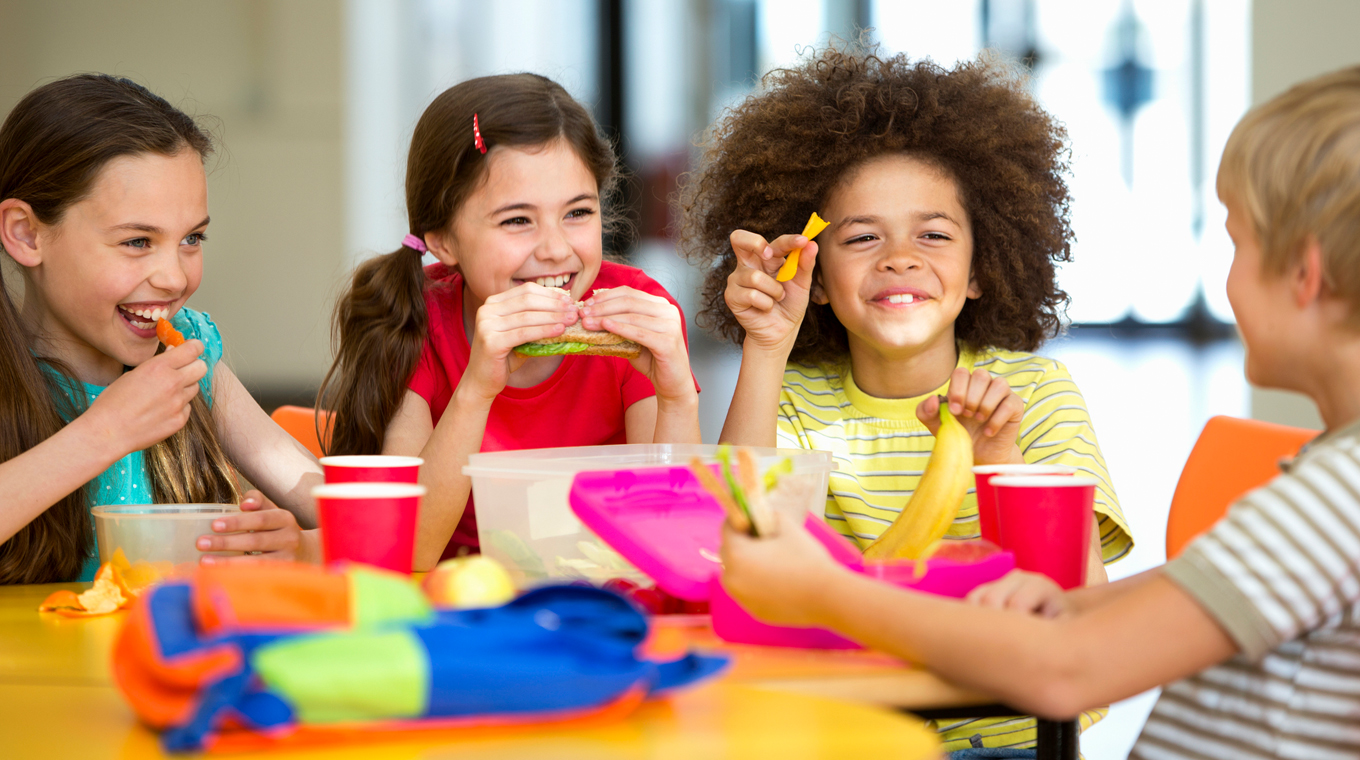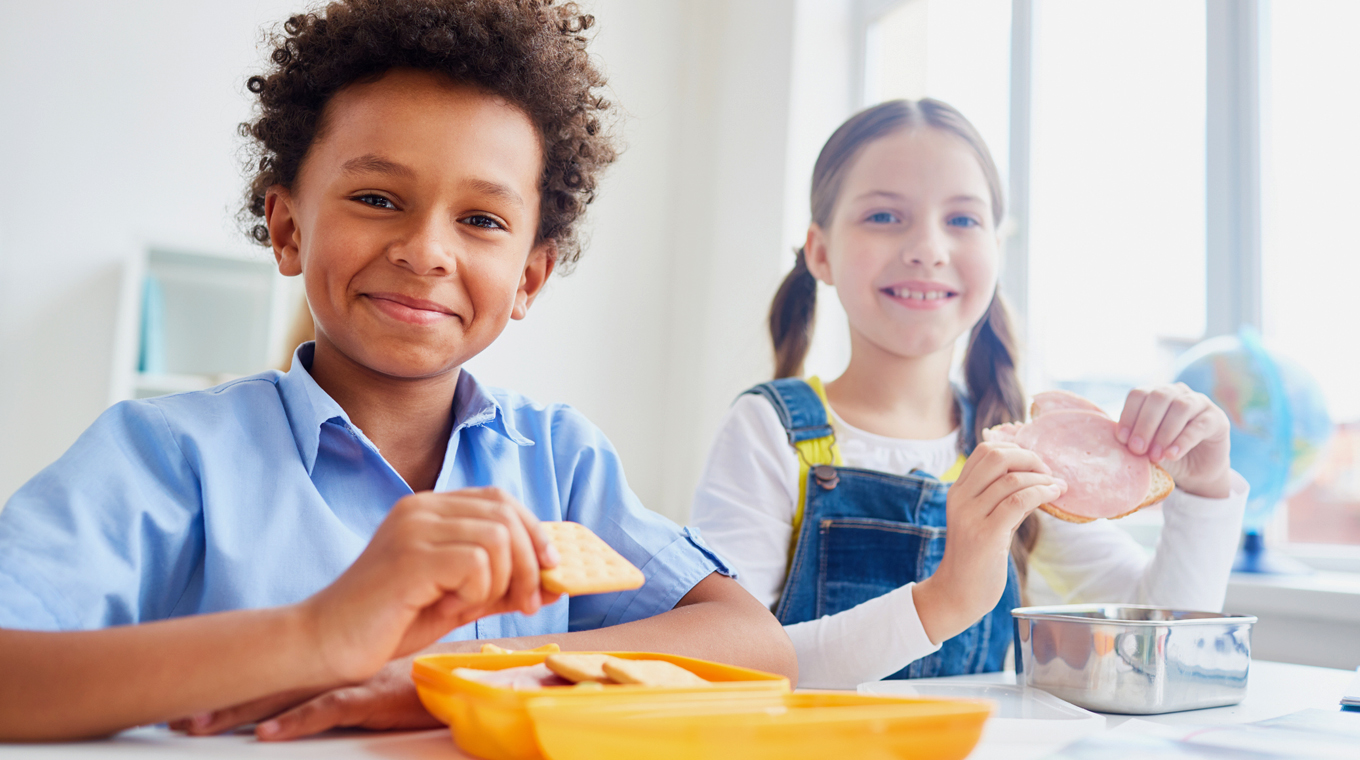

In this story
Packing a school lunch is no easy task. The food needs to be healthy, but tasty. It needs to look appealing after sitting in a box for 16+ hours (because ideally, you packed it the night before).
On top of that, your child may have food allergies, be a picky eater, or attend a school that is nut-free and sugar-free. After all these restrictions, what’s left to put in your child’s lunchbox? Here are some easy lunch ideas for kids, from both real moms and health experts.
Stock up on healthy options and safe food storage containers

Before you begin, make sure you have everything you need to start making healthy school lunches:
1. Buy a bento-style lunch box (a compartmentalized container)
This facilitates presentation, preservation, and will make it acceptable for you to throw bits and pieces of food together and call it lunch! Check to make sure your food containers and your child’s lunch box is food safe.
2. Stock your fridge and pantry with lunch staples
Get several items from each of the following categories: (1) whole grains, (2) protein, (3) fruit, (4) vegetables, (5) healthy snacks. This Kids’ DIY Lunchbox chart created by cookbook author Debbie Koenig is an excellent resource.
Quick and healthy ideas for school lunch

These recipes are a fun alternative to the good old-fashioned sandwich, include (relatively) healthy options appropriate for preschoolers through teenagers, and are nut-free.
No-cook recipes:
- Homemade “Lunchables”Take whole grain crackers, deli meat and cheese, fruit, vegetables and fill each compartment of a bento box with a different item, and let your kids put together their own sandwiches! Mom of three Sarah Parker adds edamame or carrots with ranch dressing to her bento boxes.
- Pinwheel sandwiches or wrapsTake a tortilla or slice of bread (flattened with a rolling pin), spread with hummus, mayo or cream cheese and top with chicken, deli meat and/or cheese. Layer on lettuce or other sliced veggies. Roll in plastic wrap, store overnight and slice into pinwheels in the morning. (Here’s a wikihow tutorial for extra help.)
Quick-cook recipes:
- Meatball and veggie skewersTry this recipe from FoodNetwork.com: “Frozen meatballs get popped into the microwave for 30 seconds before being threaded onto a [toothpick], along with a cherry tomato.” Add sliced cheese, pickles, and folded up spinach for more color and texture.
- English muffin pizzas
Mini pizzas, like these from EatThis,NotThat!, are always a big hit. Take an English muffin, and top with tomato sauce, shredded mozzarella cheese and pizza toppings of choice. This can be prepped ahead of time, then heated in the toaster oven.
Recipes that use leftovers:
- Pizza pasta salad
Take that leftover pasta and repurpose it with your child’s favorite pizza toppings, like mozzarella cheese, pepperoni, black olives, broccoli and tomatoes. See Momables.com founder Laura Fuentes’ pizza pasta salad for inspiration. - Stuffed rice balls
Form rice into balls and stuff with fish, then season with salt or furikake seaweed mix. “This is very popular in my house!” Esther Yao, mother of three, told Mom.com. Sub in stuffings like salmon, beef, pork, ground turkey, or tuna with mayonnaise.
Easy dairy-free and gluten-free recipes for kids
Modify the lunch ideas above with gluten-free pasta, bread, or tortillas, and hold the cheese or pick up a dairy-free cheese.
How to get kids to eat healthy

Now that you’ve packed the perfect, healthy lunch — how do you get your kids to eat it?
It might help to have your child involved in the process. “This strategy gives parents a great opportunity to discuss the benefits of different meal options and why certain foods may be healthier and make them feel better than others,” pediatric dietitian Jennifer Hyland, RD, told the Cleveland Clinic. “Plus, involving the child in any decision-making process typically leads to better outcomes and acceptance — and the meal-planning process is no exception.”
Some other tips for getting kids to eat healthy:
1. Sneak in vegetables whenever you can
Add finely shredded carrots and zucchini to meatballs and chicken noodle soup, stick broccoli in mac ‘n’ cheese, add spinach to smoothies. “I add a veggie concentrate to my banana bread,” Yao shared with mom.com, “so the bread itself has lots of nutrients.”
2. Pick healthy snacks
“Strawberries with a dollop of whipped cream, cucumbers with a bit of oil & vinegar for dipping. Parfaits with plain yogurt, a bit of honey, berries, granola — layered for fun,” mom of three Marisa L. Russell previously told Mom.com. Kaiser Permanente suggests kid favorites like string cheese, air popped popcorn and baby carrots.
3. Know how to read nutrition labels
First, check the ingredient list — stay away from anything that contains high fructose corn syrup or lists sugar as one of the first three ingredients. (Sugar has many names; look it up and get familiar with them!) On the nutrition facts label, look at added sugars, saturated/trans fats, and sodium.
4. Teach kids the “why” and have them take ownership in building their meals
For the child who constantly demands to know why he has to eat his greens or why she has to drink her milk, try explaining the health benefits of each food group, which foods to eat, how much, and more. MyPlate.gov simplifies the process with an interactive quiz.
And mom Debbie Koenig previously shared this genius idea with Mom.com: Let your child select items from each food group, then have him pack his own lunch!
Happy lunch-making!







